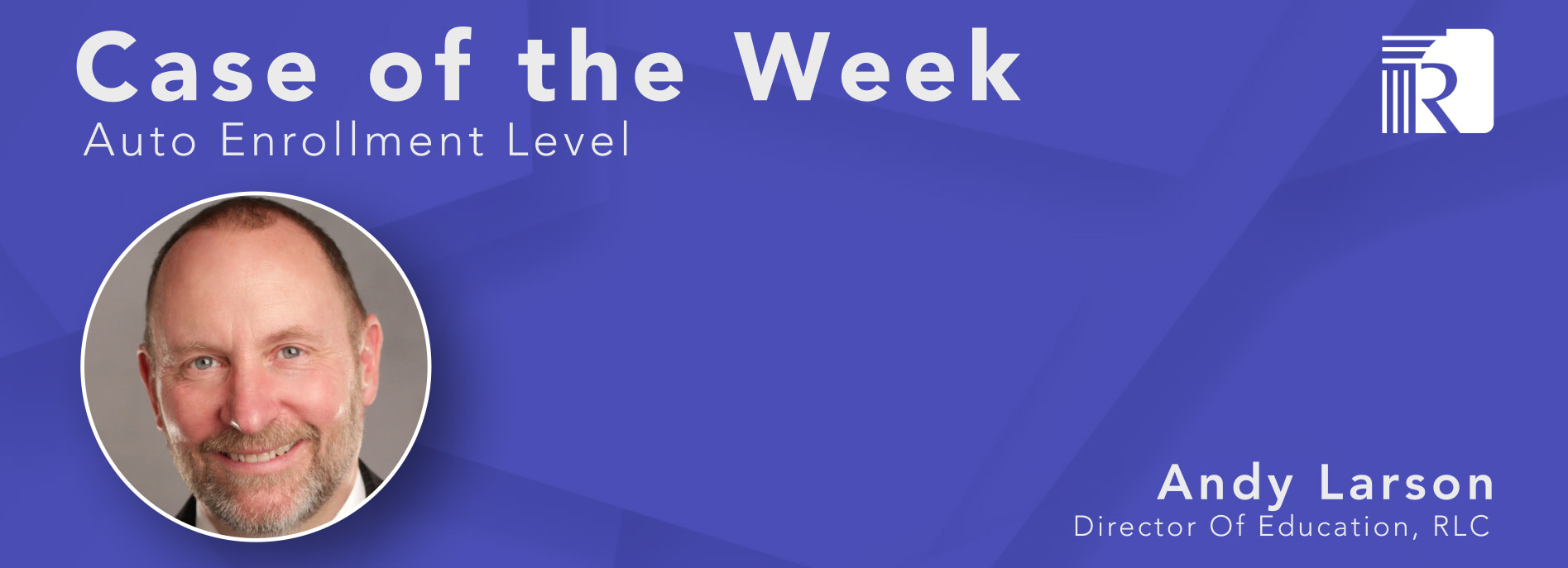
Using a 10% Automatic-Enrollment Deferral Rate
Automatic enrollment and escalation are popular features with many 401(k) plan sponsors. SECURE Act 2.0 requires new 401(k) or 403(b) plans to include an eligible automatic contribution arrangement (EACA) within certain parameters. This article addresses the feasibility of a large initial deferral rate and no subsequent auto-escalation.
Welcome to the Retirement Learning Center’s (RLC’s) Case of the Week. Our ERISA consultants regularly receive calls from financial advisors on a broad array of technical topics related to IRAs, qualified retirement plans and other types of retirement savings and income plans, including nonqualified plans, stock options, Social Security and Medicare. This is where we highlight the most relevant topics affecting your business. A recent call with a financial advisor in Texas is representative of a common question on setting large auto-enrollment deferral amount.
"My client wants to establish a 401(k) plan and satisfy the new requirement to have automatic enrollment. He’s wondering whether a plan that incorporates an automatic enrollment feature with a 10 percent initial deferral amount with no subsequent automatic deferral increases would satisfy the requirement."
Highlight of the discussion
Section 101 of Secure Act 2.0 requires any new (established after December 29, 2022) 401(k) or 403(b) plans include an eligible automatic contribution arrangement (EACA) with an automatic initial default rate of between three percent and 10 percent, as well as auto-escalation of one percent per year up to a maximum of at least 10 percent, but no more than 15 percent. There is flexibility in designing a plan that meets the new automatic enrollment requirements.
Having a plan with a 10 percent initial deferral rate without an auto-escalation feature would still fall within the parameters of an EACA required to meet the automatic enrollment requirement of Section 101 of SECURE Act 2.0 for new plans. Therefore, with appropriate plan language, the objective can be met, and new participants could be automatically enrolled in the plan at the 10 percent deferral rate following proper notification. Of course, participants must have the choice to opt out of the plan or elect a different deferral rate.
In this case, the potential plan sponsor liked the automatic enrollment concept and wanted to encourage employees to take their retirement savings seriously. However, the owner was concerned about the auto-escalation feature and possible liability if the auto-escalation feature was not correctly implemented. The organization’s rudimentary payroll system could not support an auto-escalation feature, and the owner wanted a large initial deferral amount instead.
A possible concern is the opt-out rate of participants with such a large initial deferral percentage. However, anecdotally, opt out rates appear low with most auto enroll 401(k) plans. For example, in Vanguard’s 2024 “How America Saves,” study the overall opt out rate for automatic enrollment plans was only six percent.
Conclusion
There is flexibility in designing a plan that meets the new automatic enrollment requirements set forth in Section 101 of Secure Act 2.0. Once a compliant EACA is agreed upon, the next steps for a plan sponsor would be
Incorporating the appropriate plan language into the plan document,
Notifying the payroll department,
Updating and distributing summary plan descriptions,
Providing the required EACA notice timely and
Coordinating the changes with the record keeper or TPA.
